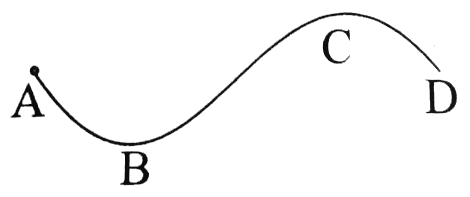Complete Solutions to Long Answer Question of chapter WORK, ENERGY AND POWER of Class 11 book with complete answers and questions
| Class 11 | PHYSICS |
| Chapter | WORK, ENERGY AND POWER |
| PRADEEP | Long Answer Question |
| Number Of Questions | 24 |
| Academic Year | 2023-24 |
Explain what is meant by work. Obtain an expression for work done by a constant force.
View SolutionWhat is meant by positive work, negative work and zero work ? Illustrate your answer with examples of each type.
View SolutionObtain graphically and mathematically work done by a variable force.
View SolutionWhat are conservative and non-conservative forces, explain with examples. Mention some of their properties.
View SolutionWhat is meant by power and energy ? Give their units.
View SolutionExplain the meaning of K.E. with examples. Obtain an expression for K.E. of a body moving uniformly ?
View SolutionState and explain work energy principle.
View SolutionWhat do you mean by potential energy ? Give any two examples of potential energy other than that of the gravitational potential energy.
View SolutionDerive the expression for gravitational potential energy?
View SolutionExplain what is meant by potential energy of a spring ? Obtaining an expression for it and discuss the nature of its variation.
View SolutionMention some of the different forms of energy and discuss them briefly.
View SolutionWhat is meant by mass energy equivalence ? Discuss its significance in Physics.
View SolutionState and establish principle of conservation of energy.
View SolutionHow do vibrations of a simple pendulum and motion of a ball over a watch glass illustrate the principle of energy conservation ?
View SolutionWhat is meant by a collision ? Discuss two types of collision with their essential characteristics.
View SolutionDiscuss elastic collision in one dimension. Obtain expressions for velocities of the two bodies after such a collision.
View SolutionDiscuss briefly inelastic collisions in one dimension.
View SolutionGive a brief account of elastic collisions in two dimensions.
View SolutionBriefly analyse inelastic collision in two dimensions.
View SolutionA block of mass 1kg is pushed up a surface inclined to horizontal at an angle of `30^(@)` by a force of 10N parallel to the inclined surface `[figure]`. The coefficient of friction between block and the incline is 0.1. If the block is pushed up by 10 m along the incline, calculate
(a) work done against gravity
(b) work done against force of friction
(c) increase in potential energy
(d) increase in kinetic energy
(e) work done by applied force.

View Solution
A curved suface is shown in figure. The portion BCD is free of friction. There are three spherical balls of identical radii and masses. Balls are released from rest one by one from A which is at a slightly greater height than C.
Wioth the surface AB, ball 1 has large enough friction to cause rolling down without slipping, ball 2 has a small friction and ball 3 has a negligible friction.
(a) For which ball is total mechanical energy conserved?
(b) Which ball(s) can reach D?
(c )For ball which do not reach D, which of the balls can reach back A?
View SolutionA rocket accelerates straight up by ejecting gas downwards. In a small time interval `Deltat`, it ejects a gas of mass `Delta m` at a relative speed `u` . Calculate KE of the entire system at `t+Deltat` and `t` and show that the device that ejects gas does work `=((1)/(2))Delta m . u^(2)` in this time interval (neglect gavity).
View SolutionTwo identical steel cubes (masses 50g, side 1cm) collide head on face to face with a speed of 10 cm`//` s each . Find the maximum compression of each. Young's modulus for steel `=Y=2xx10^(11)N//m^(2)`.
View SolutionA baloon filled with helium rises against gravity increasing its potential energy. The speed of the baloon also increases as it rises. How do you reconcile this with the law of conservation of mechanical energy ? You can neglect viscous drag of air and assume that density of air is constant.
View Solution
Long Answer Question questions and complete solutions for chapter WORK, ENERGY AND POWER of PRADEEP PHYSICS (HINGLISH) of Class 11
All Exercises from PRADEEP Class 11 PHYSICS WORK, ENERGY AND POWER
- Additional Exercises
- Advanced Problems For Competitions
- Assertion-Reason Type Questions
- Comprehension
- Conceptual Problems
- Curiosity questions
- Fill in the blanks
- higher order thinking skills
- Integer Type Questions
- JEE (Main and Advanced)
- Long Answer Question
- Multiple choice question
- NCERT EXERCISES WITH SOLUTIONS
- NCERT( Multiple choide questions-1)
- Problems For Practice
- SAMPLE PROBLEM
- Short Answer Question
- solved examples
- value Based Question
- Very Short Anwer Question.